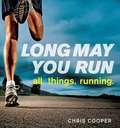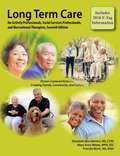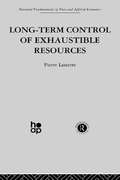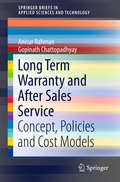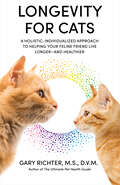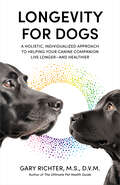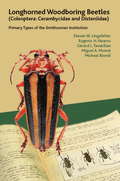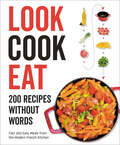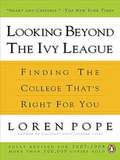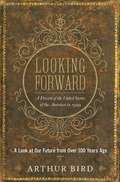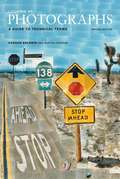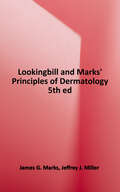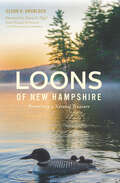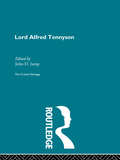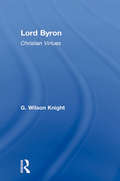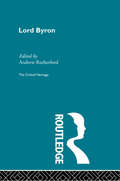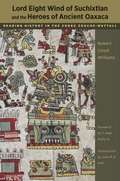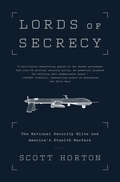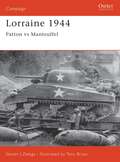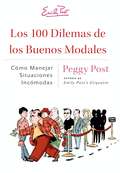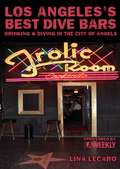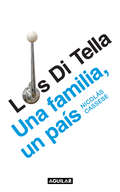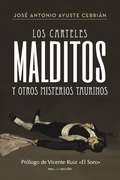- Table View
- List View
Long May You Run
by Chris CooperYou are a runner. You know how hard it is to make time to run. So you go out at 5:30 a.m. . . . in the rain. You remember every strain, sprain, ache, and pain you've ever felt. You ran through it then. You'll run through it now. You have great runs. You have not-so-great runs. You run fast. You run slow. You race for a personal best. You race just for fun. This is your time. This is your run. This is your book. LONG MAY YOU RUN all. things. running. Learn how to win a race even when you finish last; the ten "destination" runs every runner should experience; what to do with your old running shoes; why listening to the right song may help you run faster; and how to run across the United States without leaving home. Featuring can't-miss races, must-run places, tips, tricks, and words of advice and encouragement from some of the top runners today, including: Brian Sell, Bart Yasso, Colleen De Reuck, Nathan Brannen, Jeff Galloway, Suzy Favor Hamilton, Don Kardong, and many more!
Long May You Run: all. things. running.
by Chris CooperYou are a runner. You know how hard it is to make time to run. So you go out at 5:30 a.m. . . . in the rain. You remember every strain, sprain, ache, and pain you've ever felt. You ran through it then. You'll run through it now. You have great runs. You have not-so-great runs. You run fast. You run slow. You race for a personal best. You race just for fun. This is your time. This is your run. This is your book. LONG MAY YOU RUN all. things. running. Learn how to win a race even when you finish last; the ten "destination" runs every runner should experience; what to do with your old running shoes; why listening to the right song may help you run faster; and how to run across the United States without leaving home. Featuring can't-miss races, must-run places, tips, tricks, and words of advice and encouragement from some of the top runners today, including: Brian Sell, Bart Yasso, Colleen De Reuck, Nathan Brannen, Jeff Galloway, Suzy Favor Hamilton, Don Kardong, and many more!
Long Term Care for Activity Professionals, Social Services Professionals, and Recreational Therapists
by Mary Anne Weeks Priscilla Wirth Elizabeth Betsy Best-MartiniThis is the best reference book for activity directors working in long-term care, assisted living, and adult day programs, and it's the most popular text for training new professionals. This book is down to earth, easy to understand, and comprehensive enough to answer your difficult questions about working with different resident groups, meeting standards, working with team and family members, and managing your department. It lets you see how all the parts of your facility can fit together to make an empowering, healthful, person-centered environment for everyone. It shows you how to provide care that satisfies, and even exceeds, health care regulations. And it gives you suggestions on how to stay sane, at least most of the time. <P><P>A great reference book with many excellent activities and reproducible forms, the seventh edition also includes information the new F-Tag codes, changes to the survey process, cultural sensitivity, and details on successful person-centered programming.
Long Term Control of Exhaustible Resources
by P. LasserreThis title is concerned with the issue of long-term depletion of non-renewable natural resources.
Long Term Warranty and After Sales Service
by Anisur Rahman Gopinath ChattopadhyayThis volume presents concepts, policies and cost models for various long-term warranty and maintenance contracts. It offers several numerical examples for estimating costs to both the manufacturer and consumer. Long-term warranties and maintenance contracts are becoming increasingly popular, as these types of aftersales services provide assurance to consumers that they can enjoy long, reliable service, and protect them from defects and the potentially high costs of repairs. Studying long-term warranty and service contracts is important to manufacturers and consumers alike, as offering long-term warranty and maintenance contracts produce additional costs for manufacturers / service providers over the product's service life. These costs must be factored into the price, or the manufacturer / dealer will incur losses instead of making a profit. On the other hand, the buyer / consumer needs to weigh the cost of maintaining it over its service life and to decide whether or not these policies are worth purchasing. There are a number of complexities involved in developing failure and cost models for these policies due to uncertainties concerning the service life, usage pattern, maintenance work and long-term costs of rectifications. Mathematical models for predicting failures and expected costs for various one-dimensional long-term warranty policies are developed at the system level and analyzed by taking into account the uncertainties in connection with longer coverage periods and the rectification costs over the warranty period. Failures and costs are modeled using stochastic techniques and illustrated by means of numerical examples for estimating costs to the manufacturer and consumer. Various rectification policies are proposed and analyzed. The models developed here can be used to aid in managerial decisions on purchasing products with long-term warranty policies and maintenance contracts or outsourcing maintenance.
Longevity for Cats: A Holistic, Individualized Approach to Helping Your Feline Friend Live Longer and Healthier
by Gary RichterLearn the cutting-edge science of longevity and the best of integrative veterinary care to achieve a longer, happier life for your cat.Recent advances in longevity science have shed light on the causes of aging and how we can intervene to help our cats live longer, healthier lives than ever before. America&’s Favorite Veterinarian, Dr. Gary Richter, guides the reader through everything you can do to increase both life span and &“health span&” for your pet, from the kitten stage to geriatric and end-of-life care. You&’ll understand how to make the best choices for your unique cat, using diagnostic tests, personalized diet and exercise plans, supplements, herbs, pharmaceuticals, and high-tech regenerative medicine.
Longevity for Dogs: A Holistic, Individualized Approach to Helping Your Canine Companion Live Longer and Healthier
by Gary RichterLearn the cutting-edge science of longevity and the best of integrative veterinary care to achieve a longer, happier life for your dog.Recent advances in longevity science have shed light on the causes of aging and how we can intervene to help our dogs live longer, healthier lives than ever before. America&’s Favorite Veterinarian, Dr. Gary Richter, guides the reader through everything you can do to increase both life span and &“health span&” for your pet, from the puppy stage to geriatric and end-of-life care. You&’ll understand how to make the best choices for your unique dog, using diagnostic tests, personalized diet and exercise plans, supplements, herbs, pharmaceuticals, and high-tech regenerative medicine.
Longhorned Woodboring Beetles (Coleoptera: Cerambycidae and Disteniidae)
by Miguel A. Monné Eugenio H. Nearns Michael Biondi Gérard L. Tavakilian Steven W. LingafelterIn terms of quantity and breadth, the Smithsonian Institution's collection of longhorned woodboring beetles is one of the most important in the world. The effort to establish and describe this collection began as early as 1889, when the Smithsonian hired its first coleopterist (who was also only the second salaried entomologist at the Institution). In the years that followed, the collection grew thanks to the work of not only Smithsonian and U.S. Department of Agriculture entomologists, but also passionate amateur coleopterists who collected thousands of beetle specimens as they traveled the world for their professional occupations and then donated their unique collections to the Smithsonian. By 1957, the collection included nearly 200,000 specimens from around the world. Longhorned Woodboring Beetles (Coleoptera: Cerambycidae and Disteniidae): Primary Types of the Smithsonian Institution is the first complete catalog of Coleoptera primary types housed at the Smithsonian and includes stunning full-color images of each type specimen. The product of more than a decade of curatorial research and care, it reaffirms the superior international status of this truly remarkable collection.
Look Cook Eat: 200 Recipes Without Words
by Harper Design InternationalA fresh and innovative cookbook that includes 200 quick and easy-to-follow visual recipes featuring simple photographic ingredients and steps.1 ingredient + 1 ingredient + 1 ingredient 1 pot for 15 minutes = 1 delicious meal!Exhausted after a long, demanding day at work, most of us don’t want to spend time at the stove hashing over recipes filled with detailed and sometimes confusing instructions. We just want to get dinner on the table quickly and with little fuss. In addition, many of us are novices when it comes to our kitchens, unfamiliar with a range of ingredients, from spices to fresh veggies. Look Cook Eat ingeniously takes the fuss out of cooking, showing how to create delicious, sophisticated yet simple dishes in a whole new way.The recipes are broken down into their essential ingredients (joined by + signs) and amounts for each. Then just follow the arrow (—›) to see which utensils, pots, and pans to use, and for cooking times. Every recipe is accompanied by a lush, full page-four color photo of the finished dish. The result is great, fast fare sure to please the whole family. The book also offers four-color pictures to help budding home cooks identify and learn about a range of ingredients.Welcome to the kitchen of simplicity. Look Cook Eat makes cooking convenient and fun!
Looking Beyond the Ivy League
by Loren PopeThe celebrated book that revolutionized the way Americans choose colleges-now fully revised and updated An invaluable guide with virtually no competition, this book helped to establish Loren Pope as one of the nation's most respected experts on the college application process. Now fully revised and updated, Looking Beyond the Ivy League offers a step-by-step guide to selecting the right institution, a checklist of specific questions to ask when visiting a college, the secrets to creating good applications and good applicants, and much more. With as few as one-third of college students remaining at the institution they entered as freshmen, finding the right college is harder than ever before. This book makes it easier for students and their parents. .
Looking Forward: A Dream of the United States of the Americas in 1999 (Utopian Literature Ser.)
by Arthur Bird"The author respectfully submits it as his firm and immovable conviction, that the United States of America, in the years to come, will govern the entire Western Hemisphere." These words, written by Arthur Bird in 1899, were his premonition as to the direction of the US one hundred years in the future. Not only did Bird cover the financial status of our country, but the world as a whole. While many of his predictions were quite outlandish, several were remarkably visionary and accurate--including Bird's early drawing of "Aerial Navigation" before the Wright brothers ever took flight. Included in this book are predictions that: Our lunches would consist of "nutritious pellets"Drunkenness would be "very rare"Cigarette smokers would be arrested on sightEvery American home would include a robot "valet" And much more! Looking Forward is an incredible view of the world before the turn of the twentieth century. While we've come far as a country since 1899, there are many things Bird mentions to which we still aspire. He had high hopes for our civilization as a whole and as a superpower. While we have indeed accomplished a great deal, there's always room for improvement, and Bird's vision of his future remains relevant in shaping our own.
Looking at Photographs: A Guide to Technical Terms
by Gordon Baldwin Martin JürgensFrom its origins at the end of the 1830s, photography has never ceased to evolve both aesthetically and technologically. The past decade has given rise to the new age of digital photography, so "Looking at Photographs," first published in 1991, has been revised and updated to define and illustrate terms from the earliest processes to this new technology. At once a rich and informative glossary and a history of the medium, this fully illustrated guide will be invaluable to all those wishing to increase their understanding and enjoyment of the art of photography. "
Lookingbill and Marks' Principles of Dermatology
by Jeffrey J. Miller James G. MarksWith Lookingbill and Marks' Principles of Dermatology, 5th Edition, you can quickly confirm your diagnoses for even the most challenging dermatologic conditions! This highly visual guide provides the foundational information you need to identify the full range of skin diseases - all in a consistent, quick-reference format ideal for use in clinical practice. <p>• Distinguish differences among skin conditions using tables that summarize the most important characteristics of the major categories. <p>• Consider atypical diagnoses by viewing additional photos of more uncommon presentations at the end of each chapter. <p>• Make a differential diagnosis with help from numerous tables that rank skin diseases according to frequency of incidence and highlight clinical features. <p>• Test your mastery of key material with self-assessment case reviews. <p>• Reach a diagnosis with confidence thanks to superb clinical photographs, full-color histopathology images, and corresponding cross-sectional line diagrams that provide details on cause and condition. <p>• Find the information you need quickly with topics arranged in alphabetical order for fast reference, and therapy options in highlighted boxes. <p>• Access the entire text and illustrations online at www.expertconsult.com.
Loons of New Hampshire: Preserving a Natural Treasure (Natural History)
by Glenn A. KnoblockNoted for its stunning plumage and haunting cries, the common loon is an iconic symbol of nature in the Granite State. Once a familiar site on local ponds and lakes, by the early twentieth century their numbers had dwindled due to human activity. By the 1970s less than two hundred remained. It was only with the formation of the Loon Preservation Committee in 1975 by pioneer conservationist Rawson Wood that the plight of loons in New Hampshire changed for the better. Author Glenn Knoblock, in collaboration with leading experts from the organization, reveals the sometimes-mysterious nature of this beloved bird, its presence throughout the state's history, the threats it faces today and the extensive efforts to recover the population. The Loon Preservation Committee is the only organization in New Hampshire working directly on their behalf. A portion of the proceeds of the sales of this book will go directly to the organization to fund ongoing conservation efforts.
Loose Fit City: The Contribution of Bottom-Up Architecture to Urban Design and Planning
by Maurice Mitchell Bo TangDrawn from a lifetime’s experience of shared city-making from the bottom up, within rapidly expanding urban metabolisms in Delhi, Mumbai, Agra, Kathmandu, West Africa and London, Loose Fit City is about the ways in which city residents can learn through making to engage with the dynamic process of creating their own city. It looks at the nature and processes involved in loosely fitting together elements made by different people at different scales and times, with different intentions, into a civic entity which is greater than the sum of its parts. It shows how bottom-up learning through making can create a more vibrant and democratic city than the more flattened, top-down, centrally planned, factory made version. Loose Fit City provides a new take on the subject of architecture, defined as the study and practice of fitting together physical and cultural topography. It provides a comprehensive view of how the fourth dimension of time fits loosely together with the three spatial dimensions at different scales within the human horizon, so as to layer meaning and depth within the places and metabolism of the city fabric.
Lord Alfred Tennyson: The Critical Heritage
by John D. JumpFirst Published in 1995. Routledge is an imprint of Taylor & Francis, an informa company.
Lord Byron - Wilson Knight V1: The Evidence Of Asterisks (Routledge Library Editions: Lord Byron Ser. #6)
by Wilson KnightFirst Published in 2002. Routledge is an imprint of Taylor & Francis, an informa company.
Lord Byron: The Critical Heritage (Critical Heritage Ser.)
by Andrew RutherfordThe Critical Heritage gathers together a large body of critical sources on major figures in literature. Each volume presents contemporary responses to a writer's work, enabling student and researcher to read the material themselves.
Lord Eight Wind of Suchixtlan and the Heroes of Ancient Oaxaca
by Robert Lloyd WilliamsIn the pre-Hispanic Mesoamerican world, histories and collections of ritual knowledge were often presented in the form of painted and folded books now known as codices, and the knowledge itself was encoded into pictographs. Eight codices have survived from the Mixtec peoples of ancient Oaxaca, Mexico; a part of one of them, the Codex Zouche-Nuttall, is the subject of this book. As a group, the Mixtec codices contain the longest detailed histories and royal genealogies known for any indigenous people in the western hemisphere. The Codex Zouche-Nuttall offers a unique window into how the Mixtecs themselves viewed their social and political cosmos without the bias of western European interpretation. At the same time, however, the complex calendrical information recorded in the Zouche-Nuttall has made it resistant to historical, chronological analysis, thereby rendering its narrative obscure. In this pathfinding work, Robert Lloyd Williams presents a methodology for reading the Codex Zouche-Nuttall that unlocks its essentially linear historical chronology. Recognizing that the codex is a combination of history in the European sense and the timelessness of myth in the Native American sense, he brings to vivid life the history of Lord Eight Wind of Suchixtlan (AD 935–1027), a ruler with the attributes of both man and deity, as well as other heroic Oaxacan figures. Williams also provides context for the history of Lord Eight Wind through essays dealing with Mixtec ceremonial rites and social structure, drawn from information in five surviving Mixtec codices.
Lords of Secrecy: The National Security Elite and America's Stealth Warfare
by Scott HortonForty years ago, a majority of Americans were highly engaged in issues of war and peace. Whether to go to war or keep out of conflicts was a vital question at the heart of the country's vibrant, if fractious, democracy. But American political consciousness has drifted. In the last decade, America has gone to war in Iraq and Afghanistan, while pursuing a new kind of warfare in Yemen, Somalia, Libya, and Pakistan. National security issues have increasingly faded from the political agenda, due in part to the growth of government secrecy.<P> In lucid and chilling detail, journalist and lawyer Scott Horton shows how secrecy has changed the way America functions. Executive decisions about war and peace are increasingly made by autonomous, self-directing, and unaccountable national security elites. Secrecy is justified as part of a bargain under which the state promises to keep the people safe from its enemies, but in fact allows excesses, mistakes, and crimes to go unchecked. Bureaucracies use secrets to conceal their mistakes and advance their power in government, invariable at the expense of the rights of the people. Never before have the American people had so little information concerning the wars waged in their name, nor has Congress exercised so little oversight over the war effort. American democracy is in deep trouble.<P> Lords of Secrecy explores the most important national security debates of our time, including the legal and moral issues surrounding the turn to private security contractors, the sweeping surveillance methods of intelligence agencies, and the use of robotic weapons such as drones. Horton looks at the legal edifice upon which these decisions are based and discusses approaches to rolling back the flood of secrets that is engulfing America today.Whistleblowers, but also Congress, the public, and the media, play a vital role in this process.<P> As the ancient Greeks recognized, too much secrecy changes the nature of the state itself, transforming a democracy into something else. Horton reminds us that dealing with the country's national security concerns is both a right and a responsibility of a free citizenry, something that has always sat at the heart of any democracy that earns the name.
Lorraine 1944
by Steven Zaloga Tony BryanOsprey's examination of the confrontation between the US Army and German forces in Lorraine during World War II (1939-1945). In the wake of the defeat in Normandy in the summer of 1944, Hitler planned to stymie the Allied advance by cutting off Patton's Third Army in the Lorraine with a great Panzer offensive. But Patton's aggressive tactics continued to thwart German plans and led to a series of violent armored battles. The battle-hardened Wehrmacht confronted the better-equipped and better-trained US Army. The Germans managed to re-establish a fragile defensive line but could not stop the US Army from establishing bridgeheads over the Moselle along Germany's western frontier.
Los 100 Dilemas de los Buenos Modales
by Peggy PostíAl fin! Soluciones claras para aquellos momentos inevitables e incómodos de la vida. Alguna vez se ha molestado con aquellas personas que no dejan de hablar en sus teléfonos celulares, que se le atraviesan en las colas o que no paran de susurrar en el cine? Se ha preguntado quién debe pagar la cuenta cuando salen a comer a un restaurante? Alguna vez ha recibido un regalo que no le gusta? Ha llegado a quedarse sin palabras cuando le han hecho una pregunta indiscreta? Peggy Post, la experta en etiqueta dentro de Estados Unidos, llega a su rescate con este manual preciso y apropiado que nos ayuda a contestar aquello que alguna vez hemos dudado sobre los principales 100 dilemas de los buenos modales.
Los Angeles's Best Dive Bars
by Lina LecaroLos Angeles might be the capital of conspicuous consumption, but the other cliché about "La La Land"-that it's a cultural wasteland-couldn't be further from the truth. For every "Extreme Makeover-Club Edition" (in which would-be impresarios continually swankify their establishments in a relentless quest to be "the" hot spot du jour), there is a well-worn drinking hole full of history, serving up a far more elusive and seductive mix of stiff drinks, loose atmosphere and keep-it-real regulars.In Los Angeles' Best Dive Bars, you'll get the scoop and the poop on the city's liveliest, lowlife n' liquor-soaked landmarks. This essential booze bible has the lowdown on which bars serve free food, which have great-and not so great-karaoke, bars that appear in your favorite movies and much, much more. Whether you're looking for a friendly spot where "everybody knows your name," a filthy blackened cave where nobody ever will, a gently-gentrified hole specked with dive-obsessed hipsters or a dusty relic full of hip-replacements, you're sure to find a spot to soak up-and get soaked in-here in these pages.LINA LECARO is the nightlife columnist for the LA Weekly. She has been patrolling Los Angeles' most decadent after dark dens and its grungiest grottos with equal aplomb for over twenty years (i.e. before she could actually drink legally). A born and bred Angeleno, she's no angel when it comes to digging deep into LA's most harrowing drunkard-approved hovels . She might prefer her cocktails sweet, but her favorite bars (and barflys) have always been anything but.
Los Di Tella: una familia, un país
by Nicolás CasseseLa historia de la familia Di Tella está indiscutiblemente ligada a la historia nacional. El apellido es un sello que ha dejado su marca en la industria, el arte, las ciencias y la política. Cada tanto se ve por la calle algún mítico SIAM Di Tella, que fue el automóvil moderno de la clase media argentina de los años sesenta. Todavía, en alguna fiesta familiar, se consumen bebidas enfriadas en una de esas sólidas heladeras, de inolvidable bolita en la manija, que sigue funcionando como el primer día aunque ya tiene más de cincuenta años. Las huellas de aquella usina de la vanguardia artística y cultural que fue el Di Tella pueden rastrearse en muchas de las obras de los consagrados y son punto de referencia inevitable para quienes se inician. Numerosos profesionales y académicos pasaron en esos años por el Instituto o cursaron sus estudios en la Universidad Di Tella. Y hasta es posible que algún kelper conserve un osito de peluche de esos enviados por Guido en su función de canciller. Desde que el viejo Torcuato bajó del barco con los inmigrantes que contribuyeron a poblar el país, y a los 18 años fundó la fábrica de amasadoras de pan que creció hasta convertirse en un imperio, la historia de la familia Di Tella está indiscutiblemente ligada a la historia nacional. El apellido es un sello que ha dejado su marca en la industria, el arte, las ciencias y la política, y representa la esperanza de una burguesía que quiso ser industrial e ilustrada. Inmigrantes a comienzos del siglo XX, industriales en los cincuenta, mecenas de la contracultura en los sesenta, peronistas de izquierda y exiliados políticos en los setenta, renovadores en los ochenta, menemistas en los noventa y kirchneristas en el dos mil, los Di Tella fueron, además de provocadores vocacionales y filántropos generosos, actores centrales en los principales acontecimientos de la Argentina del último siglo. Del relato íntimo de esta saga surgen los conflictos de una familia poderosa, pero también las tensiones del país que los cobijó; asomarse a esas vidas es también una forma de comprender nuestro pasado.
Los carteles malditos y otros misterios taurinos
by José Antonio Ayuste CebriánColección de maldiciones, presagios de muerte, vaticinios malditos y otras casualidades fatales que se han producido a lo largo de la historia de uno de los artes más mitificados y misteriosos de todos los tiempos: el toreo. <p><p>Recorrido por los más famosos carteles malditos de la historia de Toreo y de los muchos y muy variados presagios de muerte y desgracias que han sufrido innumerables toreros de todos los tiempos.
